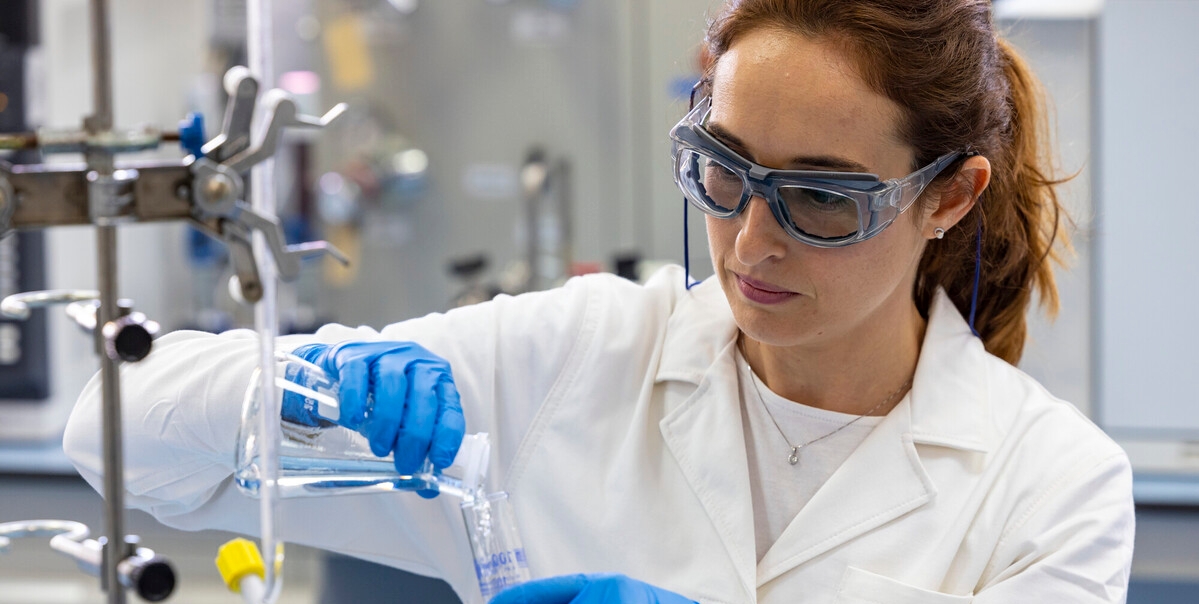
Cross-cutting competencies
Cross-cutting competencies
Cross-cutting competencies are increasingly in demand and it is clear to companies that they are a valuable asset for their employees.

Women in science
Conquering the STEM fields
Education is the key to unlocking the potential of women in science. However, while it is true that there has been a positive evolution in terms of female presence in STEM disciplines, challenges remain.


Women in science: education and the current situation
From the pioneers of the past to contemporary innovators, these women not only broke barriers, but also paved the way for future generations.
The search for equity and diversity in the world of science has marked the path of women whose contributions have been fundamental in STEM (Science, Technology, Engineering, and Mathematics) fields. Although there is still a long way to go, more and more girls and young women are finding role models in these disciplines, important women in science capable of breaking stereotypes and awakening vocations, making it clear that talent knows no gender. Join us on this journey through the history of some of the most interesting women in science, discovering their achievements and how they defied stereotypes.
Sustainable Development Goal 8, which seeks to promote sustained, inclusive, and sustainable economic growth, includes addressing gender gaps in the educational and professional spheres as one of its imperatives, and the figures back this up.
According to the latest data from the statistical series, Scientists in Figures, prepared by the Women and Science Unit of the Ministry of Science and Innovation, over the last 5 years, the percentage of women (56.3%) remains higher than that of men among those who have enrolled in undergraduate and first- and second-cycle degree programs. However, female students barely represent 26.5% of the total student body in the branches of engineering and architecture, compared to the 71.8% they represent in studies related to health sciences.
Along the same lines, the CYD 2021/2022 Report notes the low female presence in information and communication technologies (ICT) and mathematics, in comparison with the European Union. Barely 14% of students in these disciplines in Spain are women, 5.5 points less than in the European Union as a whole, differences that are also observed in other fields such as mathematics, where they represent 35.6% in undergraduate studies (41.4% in the EU) and 24.4% in master's degrees (51.7% in the EU).
More and more important women scientists are breaking educational barriers in STEM fields, becoming role models for the new generations. The recent Nobel Prize in Physics awarded to Anne L'Huillier or its equivalent in medicine for Katalin Karikó are just a few examples. And the fact is that, supporting equal opportunities in science education is essential for building a more equitable and sustainable future.
Women scientists: a look back at history
Discover the professions that make a more sustainable world possible
Develop your potential with us in a challenging project
Women in science and STEM disciplines at Repsol
Innovation is part of Repsol's DNA. That's why we not only incorporate women scientists into our talented teams, but we also recognize the role of women scientists and promote initiatives that bring us together within the STEM professions.
Encouraging the participation of women in STEM disciplines is not only a matter of equity, but also a strategy to drive innovation and solve global challenges. Women scientists not only inspire future generations, but also bring unique perspectives and creative solutions to the problems facing our world. By recognizing and celebrating their contributions, we move towards a future where science is truly inclusive, diverse, and capable of addressing our society's most pressing challenges.
You may be interested in

Cross-cutting competencies
Cross-cutting competencies are increasingly in demand and it is clear to companies that they are a valuable asset for their employees.

Inclusion and integration
It's not always clear what the difference is. However, both concepts differ in the way they approach the way people participate in society.

Women entrepreneurs
Discover the power of female entrepreneurship: inspiring stories and practical advice for women who want to achieve business success.